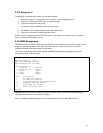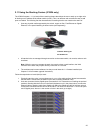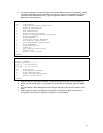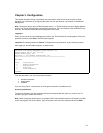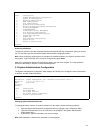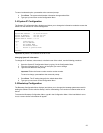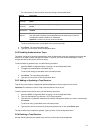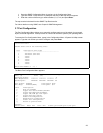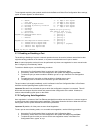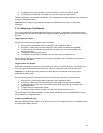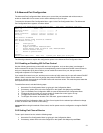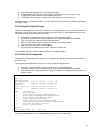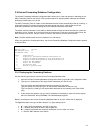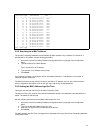
27
For a description of read and write community strings, see the table below:
Settings
Description
SNMP Read
Community
The string that defines access rights for reading SNMP data objects. The default is
public
.
SNMP Write
Community
The string that defines access rights for writing SNMP data objects. The default is
private
.
Trap
Authentication
The status of the SNMP agent for authentication trap generation. The default is
disabled
.
SNMP Trap
Receivers
The IP addresses of the network management stations that can receive traps
from the switch. Normally, these addresses are the same as your network
management software systems’ IP addresses.
Important!
A maximum of four trap receivers is allowed.
To cancel a selected option, press
ctrl-c
at the command prompt.
4. Press
Enter
. The new string takes effect.
5. Type
q
to quit and return to the Configuration Menu.
3.6.2 Enabling Authentication Traps
The switch can be set to generate authentication traps. Authentication traps are messages sent across the
network to an SNMP network management station. They alert you when someone attempts to read or
change data without the proper community string.
To set the switch to generate traps, use the following procedure:
1. Open the SNMP Configuration Menu by typing
n
in the Configuration Menu.
2. To toggle trap authentication to Enabled, type
t
.
To cancel the change, press ctrl-c at the command prompt.
3. Press Enter. The new setting takes effect.
4. Type q to quit and return to the Configuration Menu.
3.6.3 Adding or Updating a Trap Receiver
Trap receivers are network management stations designated to receive traps from the switch.
Important!
The maximum number of trap receivers that can be set is four.
To add or update a trap receiver entry, use the following procedure:
1. Open the SNMP Configuration Menu by typing n in the Configuration Menu.
2. Type a to Add/Update Trap Receiver. An IP prompt appears.
3. Type the new or updated IP address of the network management station you want to receive traps.
Press Enter.
To cancel an entry, press
ctrl-c
at the command prompt.
4. Type the trap receiver’s community string when prompted for it, then press
Enter
again.
The trap receiver entry is added or updated. Type
q
to return to the Configuration Menu.
3.6.4 Deleting a Trap Receiver
Use the following procedure to delete a trap receiver you have previously designated:



